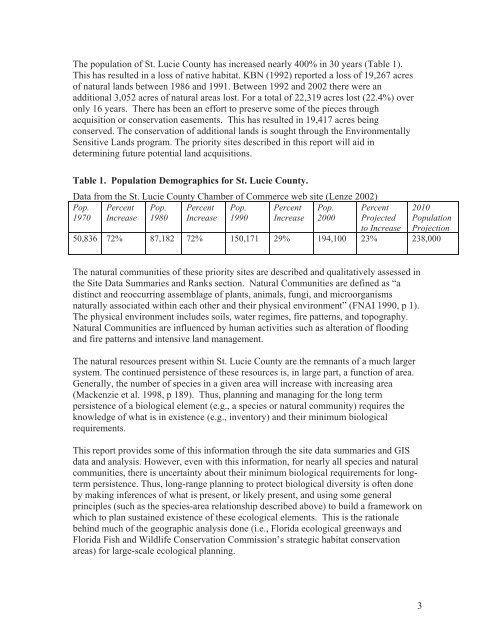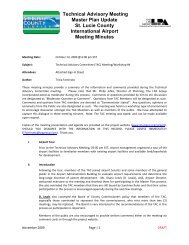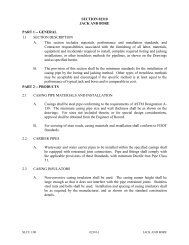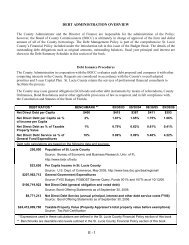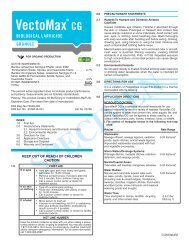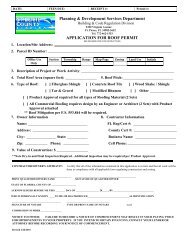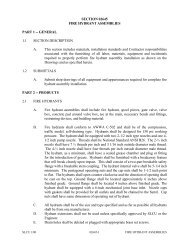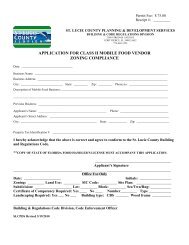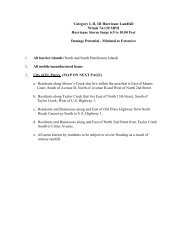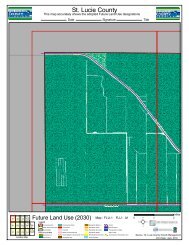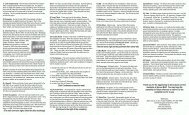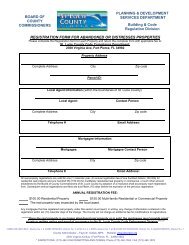Native Habitat Inventory Final Report 2004 - St. Lucie County
Native Habitat Inventory Final Report 2004 - St. Lucie County
Native Habitat Inventory Final Report 2004 - St. Lucie County
You also want an ePaper? Increase the reach of your titles
YUMPU automatically turns print PDFs into web optimized ePapers that Google loves.
The population of <strong>St</strong>. <strong>Lucie</strong> <strong>County</strong> has increased nearly 400% in 30 years (Table 1).<br />
This has resulted in a loss of native habitat. KBN (1992) reported a loss of 19,267 acres<br />
of natural lands between 1986 and 1991. Between 1992 and 2002 there were an<br />
additional 3,052 acres of natural areas lost. For a total of 22,319 acres lost (22.4%) over<br />
only 16 years. There has been an effort to preserve some of the pieces through<br />
acquisition or conservation easements. This has resulted in 19,417 acres being<br />
conserved. The conservation of additional lands is sought through the Environmentally<br />
Sensitive Lands program. The priority sites described in this report will aid in<br />
determining future potential land acquisitions.<br />
Table 1. Population Demographics for <strong>St</strong>. <strong>Lucie</strong> <strong>County</strong>.<br />
Data from the <strong>St</strong>. <strong>Lucie</strong> <strong>County</strong> Chamber of Commerce web site (Lenze 2002)<br />
Pop.<br />
1970<br />
Percent<br />
Increase<br />
Pop.<br />
1980<br />
Percent<br />
Increase<br />
Pop.<br />
1990<br />
Percent<br />
Increase<br />
Pop.<br />
2000<br />
Percent<br />
Projected<br />
to Increase<br />
2010<br />
Population<br />
Projection<br />
50,836 72% 87,182 72% 150,171 29% 194,100 23% 238,000<br />
The natural communities of these priority sites are described and qualitatively assessed in<br />
the Site Data Summaries and Ranks section. Natural Communities are defined as “a<br />
distinct and reoccurring assemblage of plants, animals, fungi, and microorganisms<br />
naturally associated within each other and their physical environment” (FNAI 1990, p 1).<br />
The physical environment includes soils, water regimes, fire patterns, and topography.<br />
Natural Communities are influenced by human activities such as alteration of flooding<br />
and fire patterns and intensive land management.<br />
The natural resources present within <strong>St</strong>. <strong>Lucie</strong> <strong>County</strong> are the remnants of a much larger<br />
system. The continued persistence of these resources is, in large part, a function of area.<br />
Generally, the number of species in a given area will increase with increasing area<br />
(Mackenzie et al. 1998, p 189). Thus, planning and managing for the long term<br />
persistence of a biological element (e.g., a species or natural community) requires the<br />
knowledge of what is in existence (e.g., inventory) and their minimum biological<br />
requirements.<br />
This report provides some of this information through the site data summaries and GIS<br />
data and analysis. However, even with this information, for nearly all species and natural<br />
communities, there is uncertainty about their minimum biological requirements for longterm<br />
persistence. Thus, long-range planning to protect biological diversity is often done<br />
by making inferences of what is present, or likely present, and using some general<br />
principles (such as the species-area relationship described above) to build a framework on<br />
which to plan sustained existence of these ecological elements. This is the rationale<br />
behind much of the geographic analysis done (i.e., Florida ecological greenways and<br />
Florida Fish and Wildlife Conservation Commission’s strategic habitat conservation<br />
areas) for large-scale ecological planning.<br />
3


